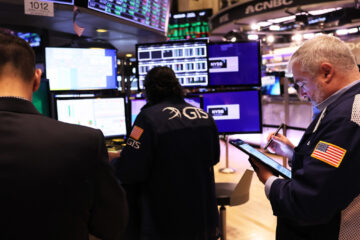Travel means different things to different people. For some, it’s a dream trip around the world, while for others, it’s a car trip to visit family. But either way, report after report shows that the travel industry remains robust no matter which way the economy turns.
The only major dip in annual travel numbers and spending to take place in the last two decades was the result of border restrictions enacted during the 2020 COVID-19 outbreak — a dip that caused a protracted bounceback that is still being felt five years later.
💸💰Don’t miss the move: Subscribe to TheStreet’s free daily newsletter💸💰
Driving vs. flying; staying with friends vs. staying in a hotel
This week, consulting giant Deloitte released the results of its annual Travel Outlook survey for the year ahead. The numbers are showing that the trip average among the 4,000 American adults polled was 2.14 trips during the last holiday season — an increase of nearly 14% from the 1.88 seen in 2023.
“What we’re seeing is that travel demand is strong,” Eileen Crowley, a partner leading Deloitte’s transportation and hospitality branches, told TheStreet. “But if travelers aren’t feeling as good about their financial position and affordability, they are making adjustments. A lot of times that might mean driving versus flying or staying with friends versus staying at a hotel.”
Related: Remote workers gain a new long-term tourism opportunity
The report shows that Gen Z travelers, classified as those born between 1997 and 2022, are the ones making the most adjustments to their travel for reasons having to do with affordability — in 2025, 26% of those polled plan to drive instead of fly to their destination while a further 25% hope to avoid high hotel prices by staying with family or friends.
Another common money-saving strategy is to book flights with a longer transfer in order to avoid paying for the convenience of a direct route.
Everyone defines vacation differently — for some people it’s a beach trip with family and for others it’s a bucket-list destination. (Photo by Jens Büttner/picture alliance via Getty Images)
picture alliance/Getty Images
‘We see the demand staying into 2025’: Deloitte
As people get older and, according to averages, wealthier, they often prioritize other things, like lounge access. People born between 1946 and 1964 prioritized lounge access compared to 18% of the general population.
Another change observed from last year is the higher numbers of people who are taking longer trips but also working while away — while 25% of those Deloitte polled in 2023 said their longest trip of the year would take more than seven days, that number rose to 33% in 2024.
More on travel:
American Airlines crash with U.S. Army copter leaves no survivorsTrump starts presidency with three executive orders affecting travelAnother country just issued a new visa requirement for visitors
This is, in large part, enabled by the rise of remote work and ability to take longer trips without taking time off— the outlook also shows that 54% of millennials plan to do some work during their longest trip of 2025 while that number falls to 44% for Gen Z and 31% for boomers.
Despite the drop that occurs in proportion with one’s age, the number of people bringing work on their holidays and, as a result, taking longer trips rose for each of those age brackets when compared to the same group in past years.
“The term laptop laptop luggers was first coined during the pandemic,” Crowley continued. “These types type of travelers will spend more, take longer trips and it’s just a big contributor to the travel demand we see staying into 2025.”
Related: Veteran fund manager issues dire S&P 500 warning for 2025


